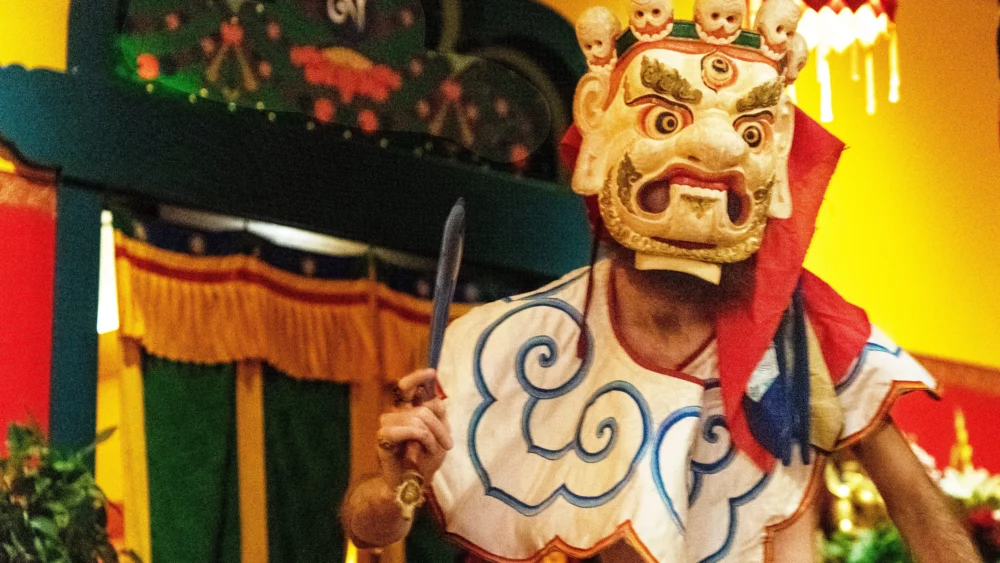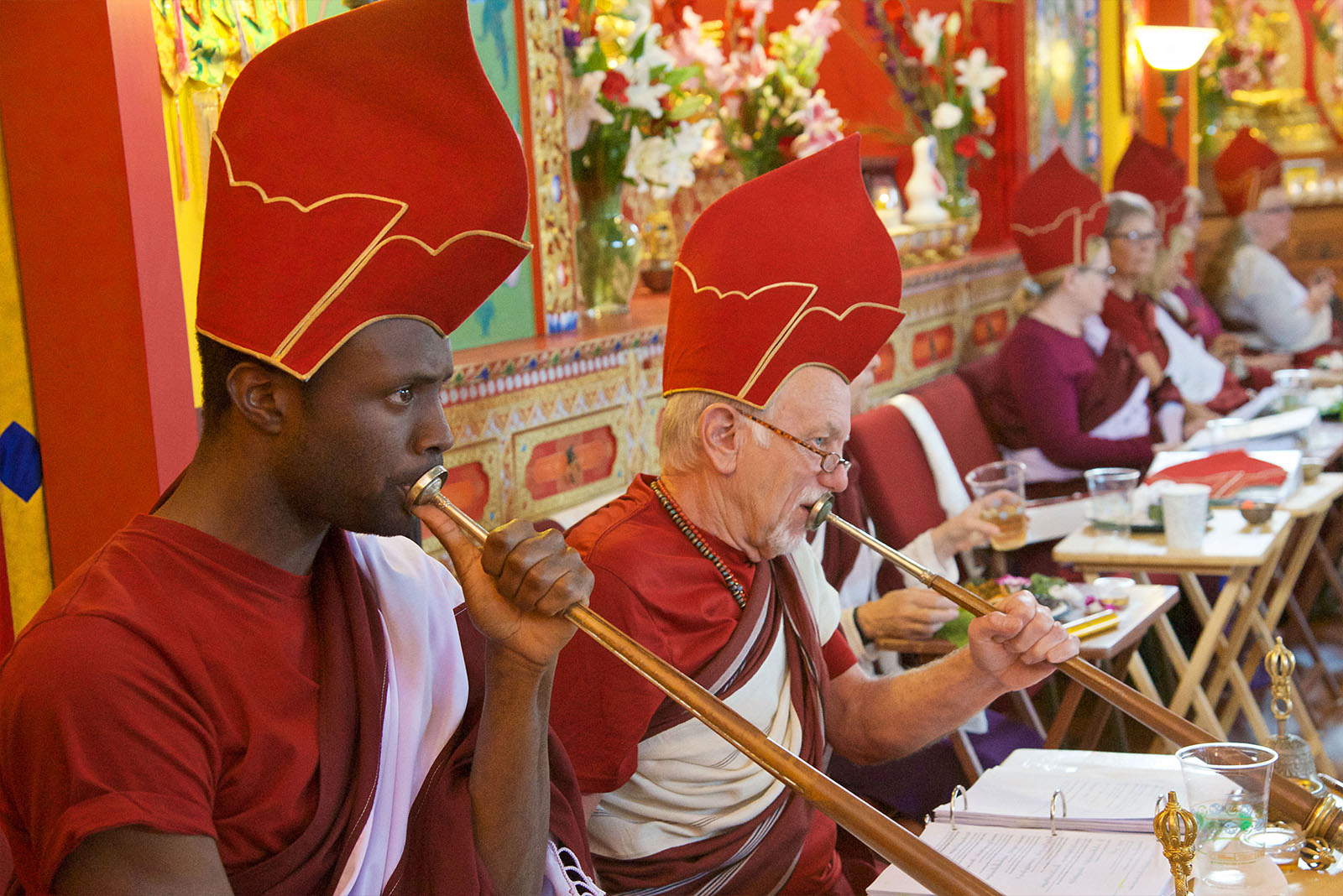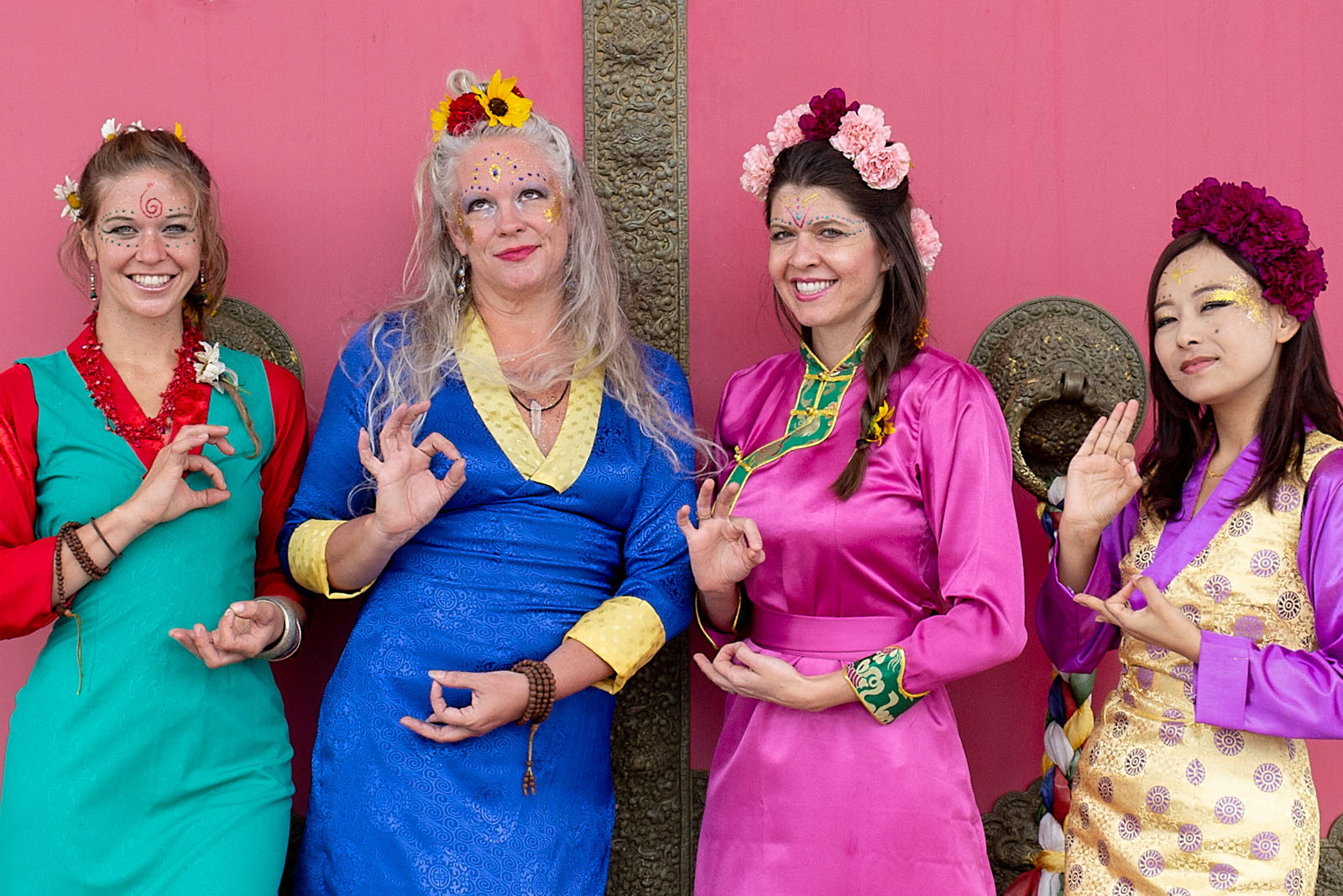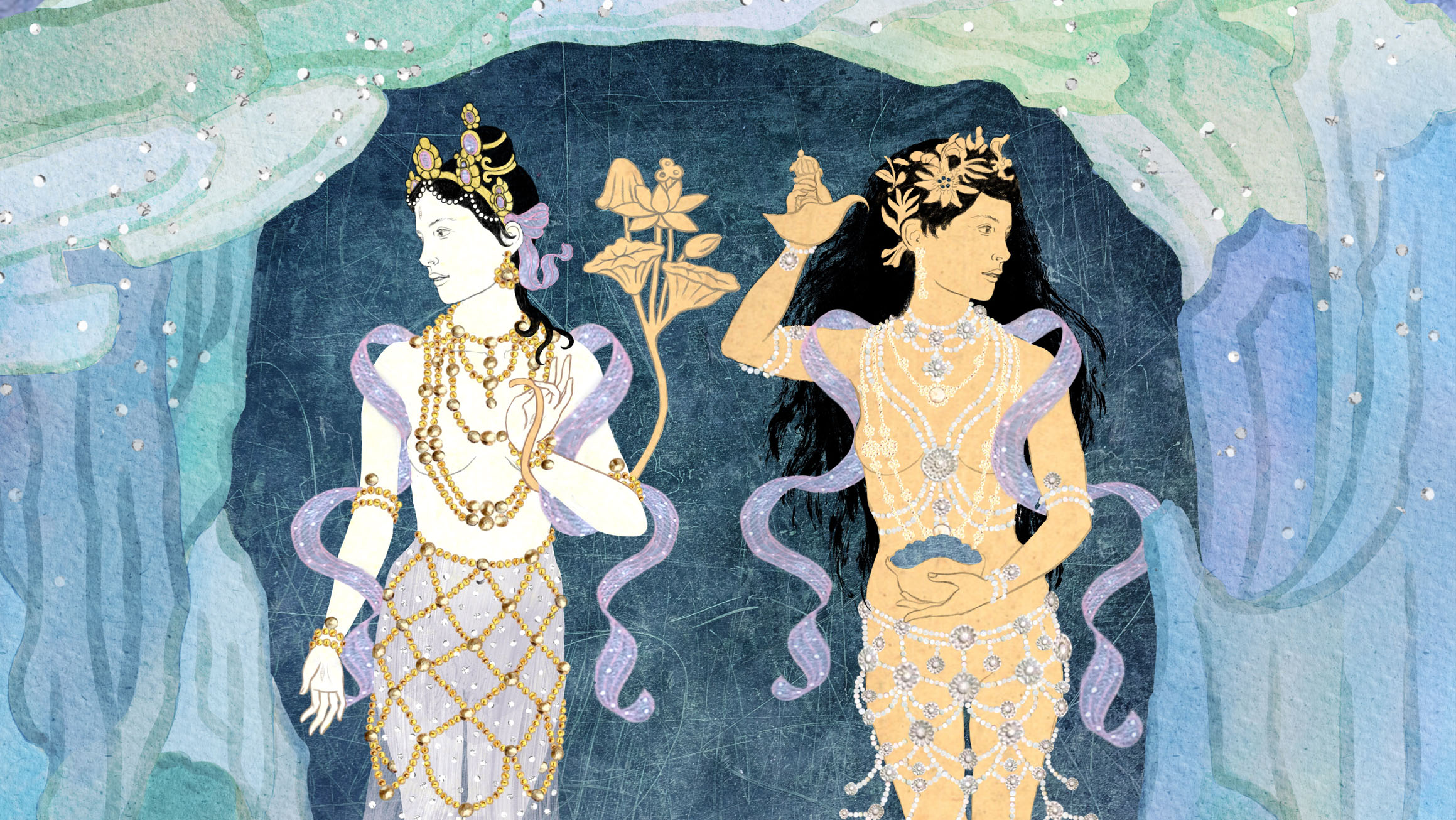Attend the teachings days of the White Dakini Drubchen, and enrich your experience of this great accomplishment ceremony.
Our annual White Dakini Drubchen provides practitioners a multi-faceted, ultimate experience of Tibetan Buddhist practice. This ceremony engages all our senses in perceiving the outer world, to support and strengthen our internal practice and transformation. In this post, we unpack the “Aspects of Drubchen”, providing you with a thorough understanding of this extraordinary event at Tara Mandala on August 1-10. Should you wish to dive deeper into Drubchen’s subtle intricacies, we offer two initial teachings days prior to Drubchen, from July 30-31.
Drubchen (“The Great Accomplishment”) is a ceremony of extensive practice, usually lasting ten days. This involves a powerful combination of the elements of Vajrayana practice, including the visualization, mudra, chant and music of a ritual text (sadhana), daily ritual feasts (tsog), and the creation of a mandala house. It is said that the effects of participating in a Drubchen is equivalent to years of solitary retreat. Drubchen concludes with accepting the spiritual accomplishments of the practice (siddhis).
Click video above to watch
Our White Dakini Drubchen also includes the following aspects:
- Fire offering rituals (jinseg) that accomplish the four enlightened activities of Pacifying, Enriching, Magnetizing, and Subjugating.
• The Sixteen Offering Goddesses Dance – Performed to enact sublime offerings to all the Buddhas and Bodhisattvas.
• The wrathful “Ging” and peaceful “Jinbeb” Dances – Performed to purify negative influences and obscurations.
• Continual recitation of mantra throughout the entire Drubchen, with participants contributing time to the “Mantra Chain.”
• At the end of the Drubchen, all the participants accept the blessings and siddhis (spiritual accomplishments) from the items that have been empowered through the ceremonies.
Fire offering rituals (jinseg)
The White Dakini Drubchen begins by setting the boundaries, erecting the physical mandala, and beginning with the approach aspect of the sadhana practice. The physical Mandala we erect on the first day serves as an outer support for our visualization and holds the sacred substances that are empowered through blessings and mantra recitation throughout the 10-days of practice.
Throughout the subsequent days, we engage in Five Fire Pujas (jinseg), performed in each of the four directions and the center, with each one corresponding to one of the Five Buddha families. Through the fire pujas, we ritually engage in the four enlightened activities to awaken beings of Pacifying, Enriching, Magnetizing, and Subjugating. The fire pujas are performed to pacify any conflict, illness, or hindrances to practice and the path, increase longevity and merit, magnetize beings of the three realms, and subjugate any hostile forces as well as purify any mistakes made during the practice.
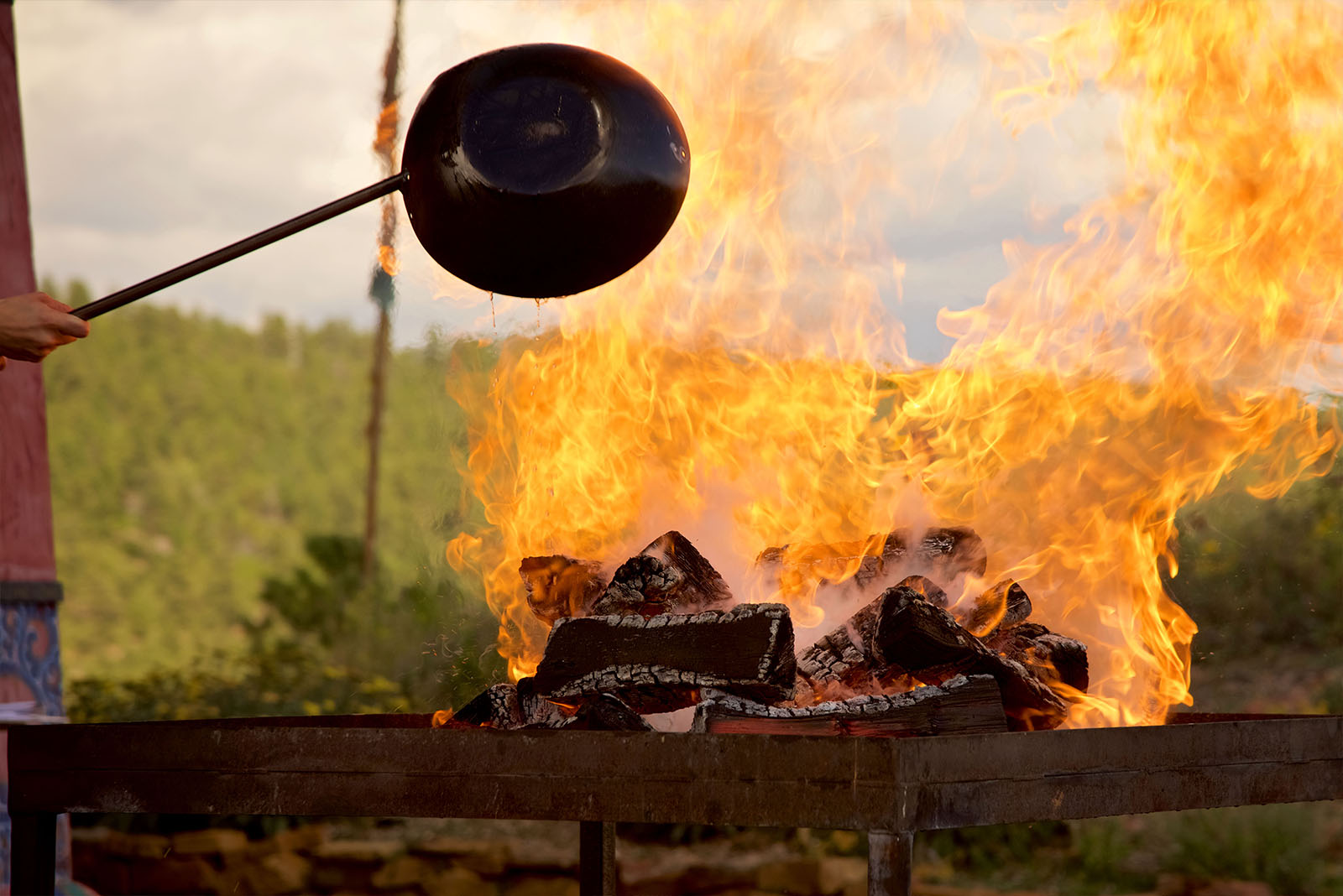
The Sixteen Offering Goddesses Dance
The primary goal of Drubchen is to awaken the pure perception of this world as sacred, through creating an enlightened environment over the 10 days of practice. “The Lute of the Gandharvas” is an aspect of the White Dakini Drubchen in which dancers gracefully enact the offerings of the Sixteen Vajra Goddesses, allowing us access into this view of enlightened mind.
The Sixteen Offering Goddesses each present a variety of pleasing and attractive qualities; such as song, dance, flowers, incense, light and laughter, while four others offer the lute, the flute, the clay drum and the round drum. Accompanying this offering dance is a poetic song replete with beautiful and vivid imagery. Below is a verse from this song:
“Even the moon, the world’s most exquisite beauty,
Does not approach the form of the lovely-to-see;
The charming one wearing a jewel necklace,
By the Vajra Garland Goddessess may you be pleased.”
~ A verse from “The Lute of the Gandharvas: The Garland of Offerings of the Sixteen Vajra Goddesses.”
Blessings and Spiritual Accomplishments (siddhis)
On the last morning of Drubchen we wake up early and before dawn we offer tsog (ritual feast). In front of us is the physical mandala and the “siddhi house”, which contains all the ritual items and sacred siddhi substances. Receiving the siddhi substances bestows realization of the wisdom beings (Jnanasattvas) and their relative and absolute siddhis, which have been empowered through our visualization and mantra recitation throughout the 10-days of practice.
Before offering tsog we perform the Jinbeb and “The Descent Of Blessings”, to banish any obstructions and bring down blessings into the siddhi substances. Then we receive the siddhis and perform a Fire Puja. Receiving the siddhis is the culmination moment of the whole Drubchen so it is important to take time after receiving the siddhis to meditate and take in the energy of these substances. This is the integration of the “Great Accomplishment” (drubchen in Tibetan).
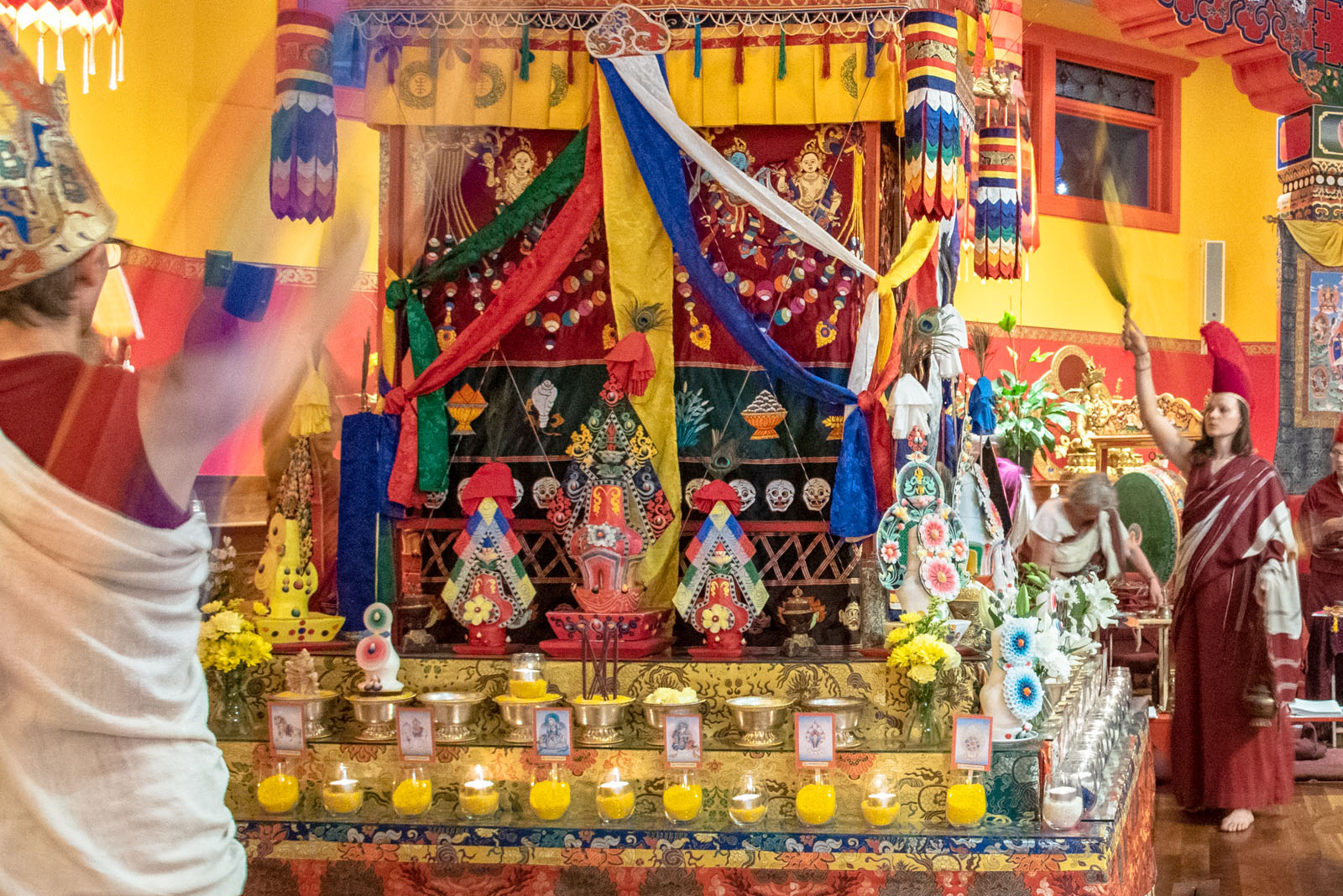
We hope you enjoyed this offering of the “Apsects of Drubchen”. We look forward to welcoming you for the White Dakini Drubchen, as we enter the land of the Dakini.

